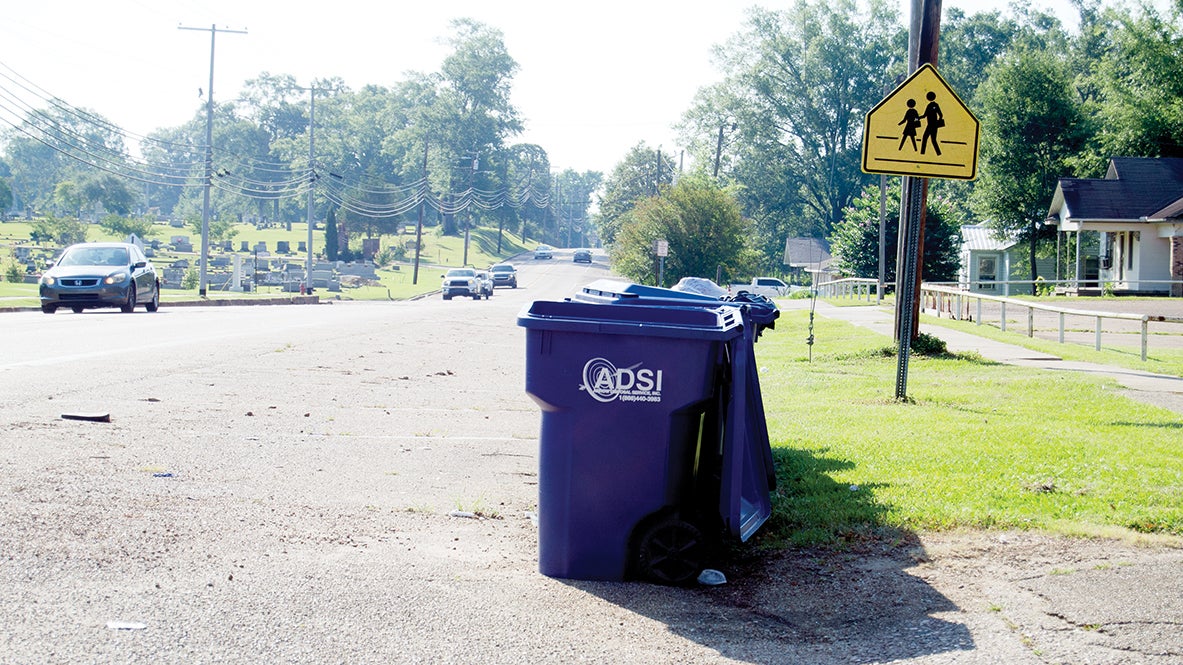Project addresses viral infection of queen bees
Published 6:34 am Monday, October 23, 2023

- Photo by Donna Campbell/Bees congregate on a hive owned by John and Pam Whittaker.
Despite widespread populations of honeybees and the major implications of their health, there are few direct options for beekeepers to reduce viral disease transmission to queens. Two apiculturists with the Mississippi State University Extension Service are out to improve the health and quality of queen bees while collaborating with their breeders.
Esmaeil Amiri, assistant Extension and research professor at the Delta Research and Extension Center in Stoneville, Mississippi, and Jeff Harris, MSU Extension bee specialist, have developed a project to address viral infections in queen honeybees.
Because antibiotics are not effective against viruses, there are limited therapeutic approaches, and none of them can be readily incorporated into honeybee management, Amiri explained.
“However, recent genetic and molecular biology developments may provide future directions for limiting virus loads in honeybee populations,” he said. “Based on the current lack of preventive or curative medication, bee management and breeding are currently the most promising approaches in mitigating viral diseases in honeybees.”
The bee researchers will host a workshop to connect with more queen breeders, and then collect samples from volunteer queen producers in two years to evaluate the health status of the young queens they produce. The project has received financial backing from the Specialty Crop Block Grant Program. Overseen by the Mississippi Department of Agriculture and Commerce, the program helps state agricultural departments enhance the competitiveness of U.S.-grown specialty crops, including honey.
Queen health and quality have been a longstanding issue in beekeeping operations, so queen producers are interested in obtaining more information about the health status and quality of the queens they produce and sell.
“While developing the proposal, we contacted several queen producers in the state and listened to their needs and ideas,” he said. “We also heard similar calls for investigations into viruses and queen health from regional and national beekeeping organizations. Finding solutions for their needs is our priority.”
More than 30 viruses have been detected in honeybees, and many of them, such as deformed wing virus, sacbrood virus, black queen cell virus, and acute bee paralysis virus have been detected in queens. The most problematic vector is the Varroa mite, and minimizing its presence in a honeybee colony lightens the viral impact on honeybee health.
“These viruses have been known for a long time due to their observable symptoms and are a major concern throughout different stages of a queen’s life,” Harris said. “They have a direct impact on the queen’s health and survival, but they also indirectly affect the health and vigor of the colonies she leads. In addition, since queens are sold nationally and internationally, they arguably play a role in long-distance distribution of viruses.”
Harris said understanding viral transmission routes is a crucial step to manage honeybee viruses. Hive spacing, visual landmarks, and entrance reducers can reduce drift between routes. High-quality diets, which ensure proper nutrition and foraging throughout the active season, can mitigate the impact of viruses.
“In local beekeeping communities, the health of colonies in one yard depends partly on the health of the colonies maintained by neighboring beekeepers, because viral diseases can be transmitted by drifting foragers, shared floral resources, or mating,” he said. “The queen is central for vertical virus transmission, so queen breeders who produce most of the honeybee queens used in the U.S. have a crucial role to play in virus control.”
Harris and Amiri have started collecting queen samples from different queen breeding operations across Mississippi. The free service will provide the participating beekeepers information about viruses that are circulating and their main transmission routes.
“This provides useful information for queen breeders and will allow them to make informed decisions and improve product quality,” Amiri said.





